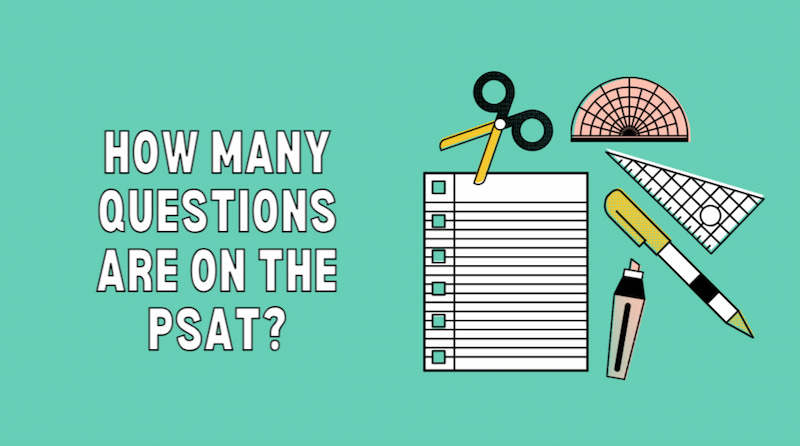It is essential for any student setting their sights on college admission tests to understand how many questions are on the PSAT. This crucial piece of information forms the cornerstone of an effective study plan, enabling students to allocate their prep time wisely and focus on areas that require more attention.
To grasp the intricacies of it, students must familiarize themselves with its format. Knowing the specific count of questions are on the PSAT aids in developing a nuanced understanding of the test’s structure, allowing for strategic planning and efficient use of study time. Our exploration into this topic doesn’t stop at numbers; it extends to providing actionable advice and insights into making the most of your preparation time, guided by our expertly selected resources on the best prep courses available.
To get started on effective preparation, it’s vital to leverage every available resource. Continue reading to uncover tailored strategies and resources that promise to elevate your PSAT preparation to its highest potential.
An Overview of the PSAT/NMSQT
An overview of the PSAT/NMSQT delves into the structure of this pivotal exam, a precursor to the SAT and a determinant for National Merit Scholarships. Central to understanding the PSAT/NMSQT is grasping the composition of its sections, particularly the math segment. Students often inquire, how many math questions are on the PSAT? To answer, the PSAT/NMSQT includes 48 math questions, designed to assess your problem-solving skills in algebra, data analysis, and advanced math concepts.
This specific focus on mathematics aims to prepare students for the types of challenges they will face in college-level courses and, ultimately, in their future careers. Recognizing the importance of this section not only helps students allocate their study time effectively but also underscores the relevance of mathematics in both college admission processes and real-world problem-solving scenarios.
Additionally, for students looking beyond the PSAT/NMSQT, we provide insightful articles on crafting a compelling college admission letter, a critical component of the application process. These resources are tailored to guide you through every step of your academic journey, from acing standardized tests to securing a place in your desired college program.
How Long Is the PSAT Test?
The specifics of the test timing and structure is crucial for effective preparation. The PSAT is structured into distinct sections, each with a designated length and number of questions or tasks, tailored to assess various academic skills. Below is a detailed breakdown of the test’s composition:
| Section |
Length (minutes) |
Number of Questions/Tasks |
| Reading and Writing |
64 |
54 |
| Math |
70 |
44 |
| Total |
134 |
98 |
This table illustrates its division, highlighting the emphasis on reading, writing, and math skills. With 64 minutes allocated to Reading and Writing and 70 minutes to Math, students have a clear picture of how long is PSAT, totaling 134 minutes or 2 hours and 14 minutes. This structured approach allows for focused preparation, especially in managing the 44 math questions efficiently within the 70-minute timeframe and navigating through the 54 reading and writing tasks in 64 minutes.
What is the difference between the timing of the PSAT and the timing of the SAT?
The difference between the timing of the PSAT and the SAT is crucial for students as they transition from preparing for the preliminary test to focusing on the SAT. The PSAT is designed to mirror the SAT in format and content but with a notable difference in timing and the number of questions. How many questions are in the PSAT? Specifically, it spans 2 hours and 45 minutes and comprises 98 questions across its sections. In contrast, the SAT is slightly longer, lasting 3 hours without the essay (or 3 hours and 50 minutes with the essay) and includes more questions, reflecting its more rigorous nature and the greater depth of content coverage.
This timing difference is significant because it affects how students manage their test-taking strategies, pacing, and endurance. For example, the SAT demands longer sustained attention and more nuanced time management skills due to its extended duration and increased question count. Recognizing these differences helps students adapt their preparation strategies effectively as they move from the PSAT to the SAT.
PSAT/NMSQT Scoring
The PSAT/NMSQT scoring system is vital for students aiming to maximize their performance on this critical assessment. A key component of this scoring system is the reading section, which often prompts students to ask, how many reading questions are on the PSAT?
To clarify, it includes 47 reading questions, designed to evaluate critical reading skills through a variety of passages and related questions. This focus on reading comprehension not only prepares students for the types of reading tasks they will encounter in college but also contributes significantly to their overall score. Each correct answer contributes to a student’s total score, emphasizing the importance of effective preparation and strategy for this section.
FAQ
How many questions are usually on a PSAT?
It typically includes 98 questions, divided among the Reading, Writing, and Math sections.
How long is a PSAT?
It is 2 hours and 45 minutes long, encompassing all sections of the test.
How many questions are on the math PSAT?
On the math section of the test, there are 48 questions, which are split between a calculator and a no-calculator portion.
How many questions can you miss on the PSAT?
The number of questions you can miss on the test and still achieve a high score varies greatly depending on the test’s difficulty and the scoring curve. There is no set number, as it depends on the performance of others and the scoring system for that year.
Born and raised with French heritage, our owner brings a unique European flair to his writing. With years of experience, he has honed his skills as a professional copywriter, mastering not only his native French but also English, Italian, a...
More articles by Enthony Ferdinand



